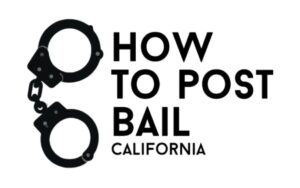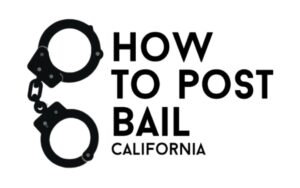Introduction
In recent years, solar energy has emerged as a sustainable and renewable power source, being increasingly adopted for both residential and industrial applications. However, solar power systems often face a challenge when it comes to powering specific appliances—particularly 12V DC devices—directly from solar panels. Solar panels typically generate higher voltages that are not always compatible with the voltage requirements of these devices. This is where DC-DC step-down converters come in. A Solar DC-DC Step Down Converter allows users to efficiently convert the higher voltage generated by the solar panels to a stable, 12V DC output, making it suitable for powering appliances like lights, fans, refrigerators, and other low-voltage devices. In this article, we will explore the function, benefits, applications, and factors to consider when selecting a solar DC-DC step-down converter.
What is a Solar DC-DC Step Down Converter?
A DC-DC step-down converter is an electrical circuit that reduces the input voltage to a lower, stable output voltage without wasting too much energy. This is achieved using components like inductors, capacitors, and transistors in a switching mechanism. The term “step-down” comes from the fact that these converters reduce (or “buck”) the voltage supplied to a lower, more usable level.
In a solar power system, the voltage produced by solar panels typically ranges from 18V to 24V, which is too high for appliances that run on 12V DC. A Solar DC-DC Step Down Converter efficiently steps down the higher voltage to 12V DC, providing the correct voltage for these devices. This allows solar energy to be used effectively to power 12V appliances and ensures that power is used without damaging sensitive electronic equipment.
How Does a Solar DC-DC Step Down Converter Work?
A Solar DC-DC step-down converter works through a series of steps that involve energy conversion and regulation. The process is as follows:
1. Input Voltage from the Solar Panel
Solar panels generate direct current (DC) electricity when exposed to sunlight. The output voltage from the solar panel may vary depending on factors like sunlight intensity, temperature, and panel efficiency. Typically, the output voltage of a solar panel is higher than what is required for most 12V appliances, making it necessary to reduce the voltage.
2. Switching Mechanism
The DC-DC step-down converter operates with a switching regulator. This switching process is typically controlled by a microcontroller or oscillator, which turns a transistor (the switch) on and off rapidly. When the switch is on, energy is transferred to an inductor, and when the switch is off, the energy is released and stored in the capacitor. This rapid switching helps to reduce the overall voltage from the solar panel to the desired output voltage.
3. Energy Storage
As the switch alternates between on and off states, the inductor stores energy in the form of a magnetic field when the switch is on, and the energy is released when the switch is off. This energy storage mechanism helps smooth out the voltage fluctuations and ensures that the output voltage remains steady.
4. Regulated Output Voltage
The output voltage is regulated by controlling the timing and frequency of the switch’s operation. Pulse-width modulation (PWM) is commonly used in these converters to adjust the width of the voltage pulses, which helps regulate the average voltage output to the required 12V DC. The result is a stable 12V DC output suitable for powering devices.
5. Delivery to 12V Appliances
Once the voltage has been reduced and regulated, it is delivered to the connected 12V DC appliances, ensuring they operate within their specified voltage range. This conversion process ensures that energy from the solar panel is used efficiently, and the appliances are protected from any potential damage due to overvoltage.
Benefits of Using a Solar DC-DC Step Down Converter
A solar DC-DC step-down converter offers several advantages that make it an essential component in solar energy systems. Below are some key benefits:
1. High Energy Efficiency
One of the most significant advantages of DC-DC step-down converters is their high energy efficiency. Unlike linear regulators, which dissipate excess energy as heat, DC-DC converters operate with much higher efficiency, typically around 85% to 95%. This efficiency is crucial for optimizing the energy generated by the solar panel, especially in off-grid applications where energy conservation is vital.
2. Stable and Reliable Power Output
Solar panels are subject to fluctuations in sunlight, leading to variations in the generated voltage. A DC-DC step-down converter ensures that the voltage output remains stable, providing consistent power to the appliances. This stability is important for devices that require a constant 12V DC input to function properly, such as LED lights, small motors, and communication devices.
3. Prevention of Overvoltage Damage
Solar panels can sometimes generate higher voltage than what is safe for a 12V appliance. Without a step-down converter, this overvoltage could damage the appliance. The DC-DC step-down converter ensures that the voltage is safely reduced to the required 12V, preventing potential damage to devices and increasing their lifespan.
4. Compact and Lightweight
Solar DC-DC step-down converters are generally compact and lightweight, which makes them ideal for portable solar power systems. Whether for mobile applications, off-grid cabins, or solar-powered vehicles, these converters can easily fit into tight spaces without adding unnecessary weight.
5. Cost-Effective
While there is an initial cost associated with purchasing a DC-DC step-down converter, the long-term benefits often outweigh the upfront expense. By improving energy efficiency and reducing waste, these converters make solar energy systems more cost-effective in the long run. Users can maximize the energy produced by their solar panels and power more devices with the same amount of energy.
6. Low Heat Generation
Unlike traditional linear regulators, DC-DC converters generate much less heat during operation. This low heat generation is beneficial in solar applications, where maintaining energy efficiency is crucial. Less heat means fewer cooling requirements and longer-lasting components in the system.
Applications of Solar DC-DC Step Down Converters
The versatility of a solar DC-DC step-down converter makes it suitable for a variety of applications. Some common uses include:
1. Off-Grid Solar Systems
Off-grid solar systems are designed to provide power to homes or businesses that are not connected to the main electricity grid. In these systems, solar DC-DC step-down converters are used to power 12V DC appliances such as lights, refrigerators, water pumps, and other electrical devices. By stepping down the voltage from the solar panel to 12V, these converters make it possible to run everyday appliances efficiently using solar energy.
2. Solar Battery Charging Systems
In solar power setups, batteries are often used to store energy for later use. The voltage from solar panels may not always match the voltage needed to charge 12V batteries. A DC-DC step-down converter ensures that the battery receives a stable 12V charge, preventing overcharging or undercharging, which could damage the battery or reduce its lifespan.
3. Mobile Solar Power Systems
Portable solar power systems, such as those used in RVs, camping, or off-grid travel, often rely on DC-DC converters to power 12V devices. In these setups, the solar panel output is stepped down to provide a stable 12V DC supply for devices like portable fridges, fans, lights, and communication tools.
4. Solar-Powered Appliances
Many appliances are designed to run on 12V DC and can be directly powered by solar energy with the help of a DC-DC step-down converter. This includes devices like solar water pumps, solar-powered fans, and lighting systems. A solar DC-DC step-down converter ensures these appliances operate efficiently without requiring an external power supply.
5. Electric Vehicles (EVs) and Solar Chargers
Solar-powered electric vehicles (EVs) and solar chargers often rely on DC-DC step-down converters to manage the energy generated by solar panels. These converters ensure that the vehicle’s 12V systems, such as lights, fans, and charging circuits, are powered safely and efficiently by the solar energy.
How to Choose the Right Solar DC-DC Step Down Converter
When selecting a solar DC-DC step-down converter, there are several factors to consider:
1. Input Voltage Range
Ensure that the converter can handle the voltage range provided by your solar panel. Most solar panels generate between 18V and 24V, so the converter must be designed to step down from this range to 12V.
2. Output Voltage
The converter should provide a consistent 12V DC output, regardless of fluctuations in input voltage. Look for a model with good voltage regulation to ensure your appliances receive a stable voltage.
3. Current Rating
Check the current rating of the converter to ensure it can handle the total current drawn by your 12V appliances. If the converter is undersized, it may not be able to provide sufficient power to your devices, leading to inefficiency or damage.
4. Efficiency
Choose a converter with high efficiency (above 85%) to minimize energy losses. High efficiency is especially important for solar power systems, where maximizing the usable energy is key.
5. Size and Form Factor
Consider the physical size and form factor of the converter, especially if you’re working with limited space in a portable or compact system.
6. Thermal Management
Ensure the converter has proper heat dissipation capabilities. Overheating can reduce the converter’s lifespan and efficiency, so look for models with good thermal management features.
Conclusion
A solar DC-DC step-down converter plays a crucial role in optimizing solar power systems by reducing the higher voltages generated by solar panels to the 12V DC required by many common appliances. These converters provide efficient, stable, and safe power to a wide range of devices, including off-grid systems, mobile setups, and solar-powered appliances. With benefits such as energy efficiency, low heat generation, and cost-effectiveness, DC-DC step-down converters are an indispensable component of modern solar energy solutions. By carefully considering factors like voltage range, current capacity, and efficiency, users can select the right converter for their specific needs, ensuring reliable performance and maximizing the potential of their solar systems.







